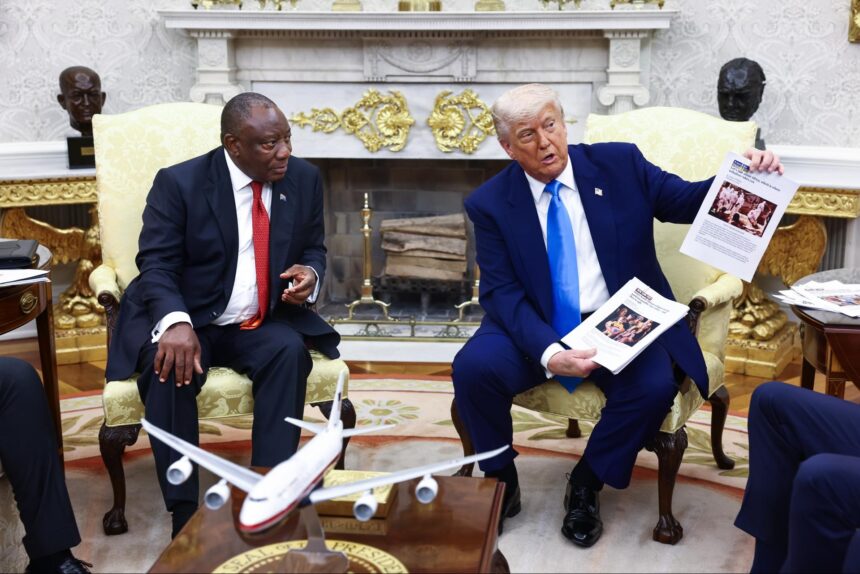In a bold move that has once again ignited debates over trade policy and cultural exchange, former President Donald Trump has threatened to impose tariffs on foreign films, positioning them as a perceived threat to American cinema and jobs. This stance, while framed as a defense of domestic interests, underscores a significant oversight: the intrinsic value of multilingual cinema in fostering global understanding and cultural diversity. As industry professionals and film enthusiasts alike voice their concerns, the potential repercussions of such tariffs extend far beyond economic metrics, raising critical questions about artistic expression, cross-cultural collaboration, and the very fabric of a connected world. In an era where storytelling transcends borders, Trump’s tariff threat serves as a stark reminder of the challenges faced by the global film industry and the vital need to recognize the enriching contributions of diverse voices in cinema.
The Economic Impact of Tariffs on Global Film Distribution
The imposition of tariffs on foreign films dramatically reshapes the landscape of global film distribution, creating economic ripples that extend far beyond the borders of Hollywood. By increasing the cost of importing films, these tariffs may inadvertently hinder market access for diverse cinematic works, especially those from non-English speaking countries. With films accounting for a significant portion of cultural exchange, the resultant economic strain could lead to fewer opportunities for multilingual cinema to reach American audiences, which not only limits viewer choice but also stifles creative innovation in storytelling.
Furthermore, the repercussions of such tariffs are felt across various sectors related to film distribution. Some of the financial implications include:
- Increased Distribution Costs: Higher tariffs raise expenses for distributors, possibly leading to increased ticket prices for consumers.
- Market Contraction: Independent films from abroad may become economically unfeasible to screen in the U.S., limiting cultural diversity in theaters.
- Impact on International Collaborations: Tariffs may discourage collaborative projects between U.S. production companies and foreign filmmakers, undermining potential successes that could arise from diverse storytelling.
Understanding these dynamics is crucial for policymakers, filmmakers, and audiences alike, as it shapes not only the economics but also the cultural fabric of cinema on a global scale.
The Cultural Significance of Multilingual Cinema in a Globalized Market
The ongoing discussion around tariffs on foreign films has sparked a critical conversation about the importance and impact of multilingual cinema. As filmmakers increasingly explore diverse narratives, they provide audiences with a reflective lens on varied cultural experiences. Multilingual films not only challenge the dominant narratives often propagated by mainstream cinema but also foster a rich tapestry of storytelling that resonates globally. The inclusion of different languages allows for a broader representation of cultures, enabling viewers to engage with stories that might not otherwise reach them. This exposure can lead to greater empathy, understanding, and appreciation for cultural differences, establishing a vital dialogue in an era where global connectivity is paramount.
Furthermore, the financial implications of multilingual cinema cannot be underestimated. By drawing in international audiences, these films can generate significant revenue across borders, contributing to a more vibrant and diversified film market. For example, the following table illustrates the impressive box office performances of select multilingual films over the past few years:
| Film Title | Year | Languages | Box Office (in Millions) |
|---|---|---|---|
| Parasite | 2019 | Korean | $258 |
| Crouching Tiger, Hidden Dragon | 2000 | Mandarin, English | $213 |
| Roma | 2018 | Spanish, Mixtec | $50 |
| Life is Beautiful | 1997 | Italian | $229 |
The impact of such films extends beyond mere box office figures; they serve as vehicles for cultural exchange, helping to break down barriers and stereotypes. In a globalized market, the narrative power of multilingual cinema emerges as a key player, showcasing the importance of embracing diversity in all its forms. Rather than imposing tariffs that may stifle this cultural phenomenon, recognizing the rich contributions of multilingual films can cultivate a more inclusive and dynamic film landscape.
Strategies for Embracing Diversity in American Film Production
The current landscape of American film production presents a unique opportunity to embrace diversity in storytelling and representation. Incorporating multilingual cinema can enrich the cinematic experience, offering audiences varied cultural perspectives and narratives that resonate on a global scale. A proactive approach to diversity involves incorporating diverse voices not just in front of the camera but also behind the scenes. This can be achieved through:
- Hiring Diverse Talent: Ensuring casting and crew reflect the diversity of American society.
- Fostering Cultural Collaborations: Partnering with international filmmakers and co-productions, which can enhance authenticity.
- Promoting Multilingual Scripts: Supporting films that utilize multiple languages to tell their stories, resonating with wider audiences.
Moreover, the establishment of initiatives that provide funding and resources for underrepresented filmmakers is crucial. Creating platforms for interaction and dialogue among diverse filmmakers can lead to innovative storytelling. Film festivals celebrating multicultural cinema serve as vital avenues for showcasing the richness of diverse narratives. The importance of these strategies lies not only in their potential to enrich the American film landscape but also in their ability to cultivate a more inclusive industry that reflects the multifaceted nature of society. Consider the following table highlighting recent multilingual films that have successfully embraced diversity:
| Film Title | Language(s) | Release Year | Box Office Success |
|---|---|---|---|
| Parasite | Korean | 2019 | Over $257 million |
| Minari | English, Korean | 2020 | Over $15 million |
| Crouching Tiger, Hidden Dragon | Mandarin | 2000 | Over $213 million |
The Way Forward
In conclusion, while President Trump’s tariff threat may seek to bolster domestic industries, it risks underestimating the rich cultural tapestry woven by multilingual cinema. By imposing economic barriers on foreign films, the administration not only hampers artistic expression but also alienates diverse audiences who benefit from the narratives and perspectives these films bring. As the global film landscape continues to evolve, it is crucial for policymakers to recognize the intrinsic value of cultural exchange and the contributions of international cinema to the American film industry. A balanced approach that nurtures homegrown talent while embracing the global nature of storytelling may ultimately prove to be more beneficial than protective tariffs.









